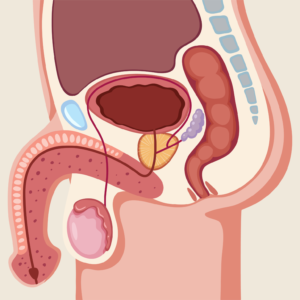Understanding the male genital anatomy is a crucial aspect of good sexual health. In this post, we will go over the basics of male genital anatomy, from the external genitalia to the internal genitalia, and everything in between.
An Overview of Male Genital Anatomy
The male genitalia have two primary functions: reproduction and urination. The external genitalia are the parts of the penis you can see, while the internal genitalia are inside the body.
External Genitalia
The penis, the primary external genitalia in males, has erectile tissue made up of two cylindrical structures called corpora cavernosa. These structures fill with blood during erections, stiffening the penis and enabling the user to achieve an erection, which is a necessary aspect of reproduction.
The ventral side of the penis contains the urethra. There is an erectile tissue surrounding the urethra called the corpora spongiosum. This tissue enlarges to form the head of the penis.
Painful and abnormal sensations in the gland’s penis and frenulum have been linked with premature ejaculation in some cases. The frenulum stretches during an erection, and it has multiple nerve endings involved in ejaculation. The foreskin, which covers the gland’s penis in uncircumcised men, stretches alongside the corpora cavernosa, allowing for efficient penetration during sexual intercourse.
Internal Genitalia
The internal genitalia includes the seminal vesicles, prostate gland, vas deferens, and testicles.
The testicles, which are the primary male reproductive devices, form testosterone, which is essential for reproduction, sex drive, muscle building, cognitive function, and overall health.
The vas deferens runs from the testicles to the prostate and the seminal vesicles provide fluid to the ejaculate to make semen, which is critical to reproduction and fertilization.
The prostate gland produces fluid that helps make sperm travel better and accounts for around 10-20% of the ejaculated fluid. The seminal vesicles, located behind the prostate and below the bladder, carry fluid that, when combined with sperm, creates semen. They contribute to around 70% of the semen volume. Only about 10% of semen volume is sperm. Semen consists of several vital components, including fructose, which provides energy to sperm and fluid that makes the semen alkaline to survive in the acidic vagina.
Final Thoughts
As you can see, the understanding of male genital anatomy is crucial to a healthy sex life. By familiarizing yourself with the different parts of the penis and internal genitalia, you can better advocate for your own health and empower others to do the same




